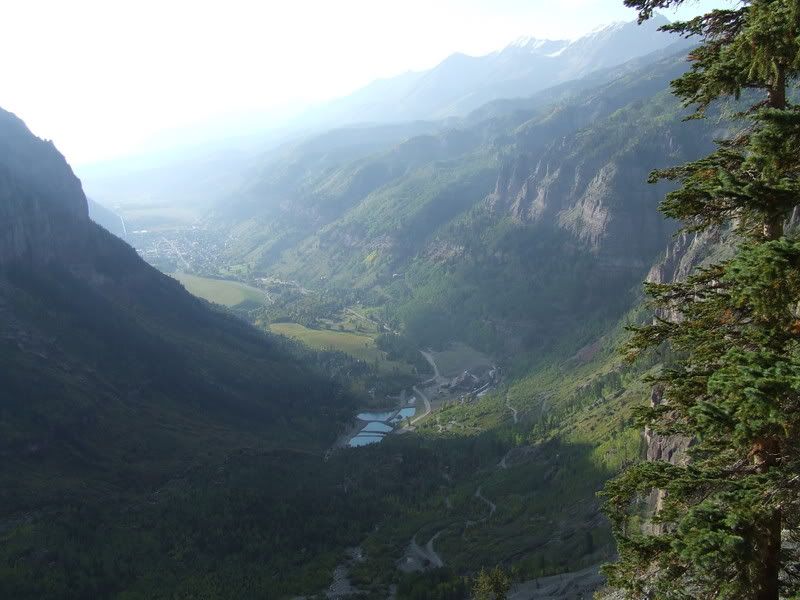S
Scenic WonderRunner
Guest
Found this news article today................
any thoughts?
~~~~~~~~~~~~~
http://www.enn.com/today.html?id=13025
Desert Dust Cuts Mountain Snow, May Spur Warming
June 26, 2007 — By Deborah Zabarenko, Reuters
WASHINGTON -- Desert dust blown onto Rocky Mountain peaks has cut the duration of snow-cover by a month or more, and the same thing is probably happening in the Alps and Himalayas, researchers reported Monday.
In a phenomenon likely to spur global warming, the reflective white of snow is replaced by darker dust deposits that absorb the sun's rays, heating up the lower atmosphere, said Tom Painter, a scientist at the National Snow and Ice Data Center in Colorado.
Speaking by telephone from Mont Blanc in Switzerland, Painter described an orange tinge he had seen on the snow of nearby Dome de Miage, which he attributed to dust carried from the Sahara in Africa.
Painter said he had observed dust-laden snow on the Tien Shan Mountains in China, and the same likely held true for parts of the Himalayas.
"I don't know of any mountain ranges that are not experiencing dust deposition," Painter said.
Dust in small doses can help to form snowflakes, but the dust that cuts the length of snow-pack in the Rockies by about 20 to 35 days a year comes in a swirling blanket, spawned by wind storms in desert or drought-stricken areas, Painter and his co-authors wrote online in Geophysical Research Letters.
The fact that dust deposits can melt mountain snow by decreasing the ability to reflect sunlight has long been established; what is new, Painter said, is the degree to which this affects snow cover. One month less of snow "is an enormous change," he said.
The desert dust-mountain snow system warms up the lower atmosphere in what climate scientists call a positive feedback loop, Painter explained: "The hotter it gets, the less snow cover you have ... and that provides a darker surface that can absorb more solar radiation and that warms things even more."
The cause for the diminished snow cover in Colorado's San Juan Mountains is dust carried from the Colorado Plateau, some 200 miles away, where Colorado, Utah, Arizona and New Mexico come together in an area known as Four Corners, the researchers said.
The underlying reason for the increased dust is changes in land use starting in the mid-19th century, Painter said.
"About 75 percent of the Western United States has been affected by grazing, by agriculture, by mining," he said. "Generally these lands were pretty stable prior to the large-scale introduction of grazing and agriculture."
Without natural grasses to stabilize the soil, more of it turned to desert and more dust blew into the mountains.
Most climate models predict more drying and warming in the U.S. desert Southwest, causing soil moisture to decrease, which means less vegetation to stabilize the soil and probably more dust emission, Painter said.
This, in turn, could mean even more intense snow melt, earlier in the year, spurring the whole cycle, he said.
Source: Reuters
any thoughts?
~~~~~~~~~~~~~
http://www.enn.com/today.html?id=13025
Desert Dust Cuts Mountain Snow, May Spur Warming
June 26, 2007 — By Deborah Zabarenko, Reuters
WASHINGTON -- Desert dust blown onto Rocky Mountain peaks has cut the duration of snow-cover by a month or more, and the same thing is probably happening in the Alps and Himalayas, researchers reported Monday.
In a phenomenon likely to spur global warming, the reflective white of snow is replaced by darker dust deposits that absorb the sun's rays, heating up the lower atmosphere, said Tom Painter, a scientist at the National Snow and Ice Data Center in Colorado.
Speaking by telephone from Mont Blanc in Switzerland, Painter described an orange tinge he had seen on the snow of nearby Dome de Miage, which he attributed to dust carried from the Sahara in Africa.
Painter said he had observed dust-laden snow on the Tien Shan Mountains in China, and the same likely held true for parts of the Himalayas.
"I don't know of any mountain ranges that are not experiencing dust deposition," Painter said.
Dust in small doses can help to form snowflakes, but the dust that cuts the length of snow-pack in the Rockies by about 20 to 35 days a year comes in a swirling blanket, spawned by wind storms in desert or drought-stricken areas, Painter and his co-authors wrote online in Geophysical Research Letters.
The fact that dust deposits can melt mountain snow by decreasing the ability to reflect sunlight has long been established; what is new, Painter said, is the degree to which this affects snow cover. One month less of snow "is an enormous change," he said.
The desert dust-mountain snow system warms up the lower atmosphere in what climate scientists call a positive feedback loop, Painter explained: "The hotter it gets, the less snow cover you have ... and that provides a darker surface that can absorb more solar radiation and that warms things even more."
The cause for the diminished snow cover in Colorado's San Juan Mountains is dust carried from the Colorado Plateau, some 200 miles away, where Colorado, Utah, Arizona and New Mexico come together in an area known as Four Corners, the researchers said.
The underlying reason for the increased dust is changes in land use starting in the mid-19th century, Painter said.
"About 75 percent of the Western United States has been affected by grazing, by agriculture, by mining," he said. "Generally these lands were pretty stable prior to the large-scale introduction of grazing and agriculture."
Without natural grasses to stabilize the soil, more of it turned to desert and more dust blew into the mountains.
Most climate models predict more drying and warming in the U.S. desert Southwest, causing soil moisture to decrease, which means less vegetation to stabilize the soil and probably more dust emission, Painter said.
This, in turn, could mean even more intense snow melt, earlier in the year, spurring the whole cycle, he said.
Source: Reuters

